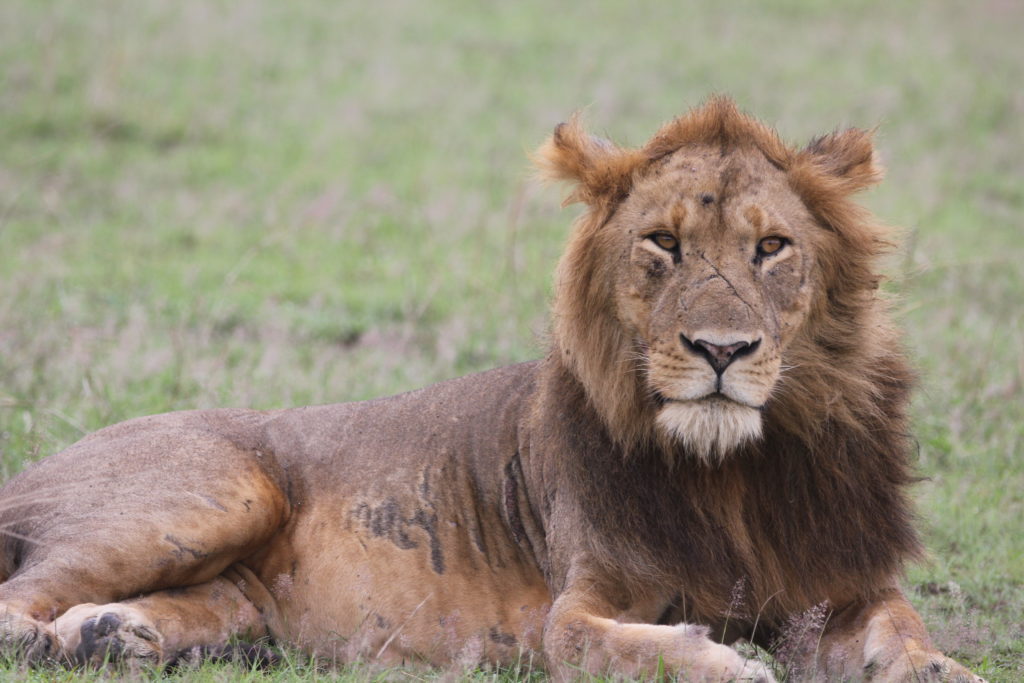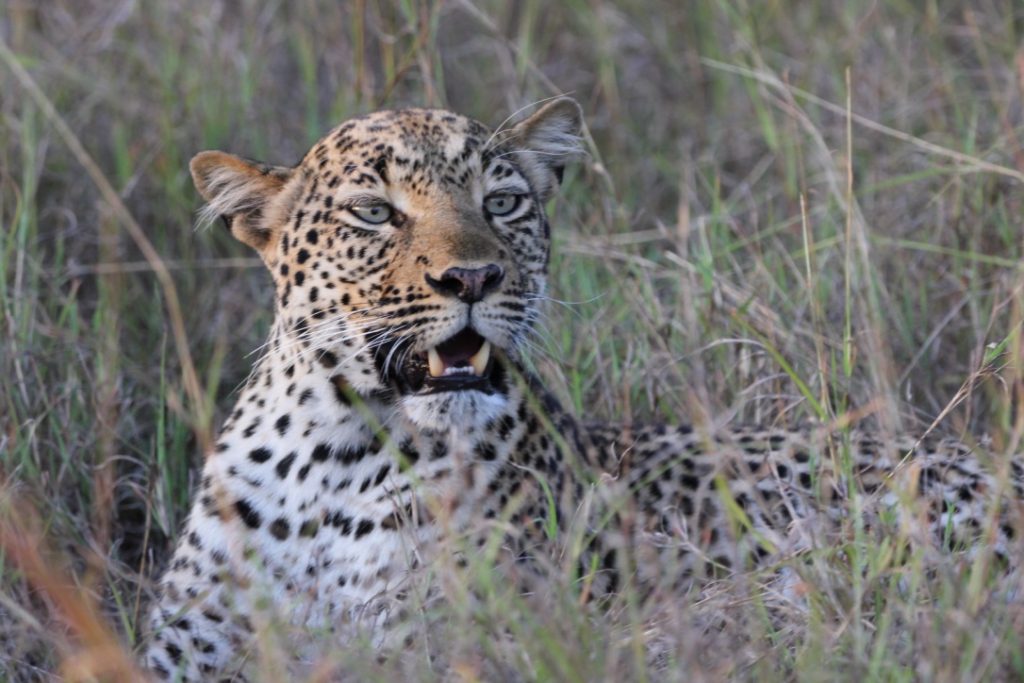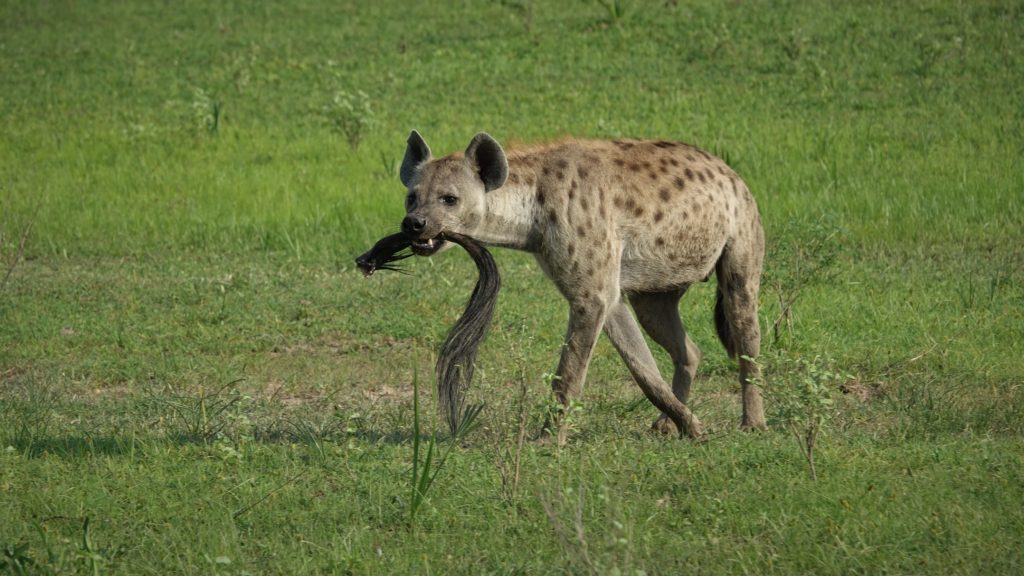
Carnivores and predators in Uganda leads you to the different animals within different National parks in Uganda. A carnivore is an organism that mostly eats meat, or the flesh of animals. It is an animal that doesn’t feed on other animals because it has to, it was born to do it! Carnivores are sometimes referred to as predators and form a major part of the food web. Uganda holds a plethora of carnivorous species that amount to 38 in total. These include: 7 felines (like lions, leopards), 5 canid species (like wild dogs, foxes), 10 mongooses (like the banded mongoose), 6 mustelids (like the badgers and otters), 3 hyenas (like the spotted and striped) and 7 viverrids (like the genets and civets.
Uganda hosts five large carnivore species: lion, leopard, hyaena, cheetah and African wild dog. An assessment of these five species shows that while many of them were widespread only 50 years ago now most are confined to protected areas and populations are declining even within these protected areas. Other smaller carnivores found within the country include: golden cat (Felis aurata), serval (Felis serval), side-striped (Canis adustus), golden (Canis aureus) and black-backed jackals (Canis mesomelas), ratel (Ratel ratel), mongooses, otters and genets. Lions and other large carnivores are some of the greatest attractions for any ecotourism business within the country. They are some of the important species that come to mind when people think about the African wildlands. They are also some of the most threatened species in Africa because of their conflict with man.
Carnivores play many significant roles within the country. Some of these roles are social while others are biological and have advantages to the ecosystem. Socially, carnivores have cultural attachments and have been seen being used as symbols in some kingdoms. Ecologically, the carnivores are known to regulate numbers of angulates which keeps the ecosystem healthy and balanced. Because of their high value and cultural significance, many programs are underway to conserve and preserve them.
Carnivores and predators within National Parks in Uganda.
The composition of treasure within tall trees and extensive grasses is a definition of what one should expect on an African safari; the lions, leopards, hyenas and cheetahs within grasslands and woodlands form a wheel of different colors that spice up the events and beauty of any safari. In Uganda, there are predominantly 4 national parks where these carnivores or big cats can be easily spotted. These include: Lake Mburo National Park, Queen Elizabeth national park, Kidepo Valley National Park and Murchison Falls National Park. The parks are punctuated with a number of carnivorous species that have a wider range of prey to feed on. Most of the large carnivores occur at low density and their populations contain less than 150-200 individuals. In the case of cheetahs and wild dogs, the numbers are probably less than 20 individuals. Travellers have a chance to observe lions display the survival mechanisms of running after antelopes who also have a responsibility of escaping and keeping safe.
According to the Uganda Wildlife Authority, large carnivores form part of the culture of any community on Earth. Whether its is the tales told in the village in Africa about lions, hyaenas and leopards or the fairy tales from Europe about wolves and bears. They convey the ’wildness’ of a place and their presence usually is an indicator that an ecosystem is intact as they are often the first species to disappear. Large carnivores in Africa, particularly in the savannas of Eastern and Southern Africa, are a great attraction for tourists and draw large numbers of visitors from around the World. Below are some of the carnivores and predators in Uganda.
Lions.
The lion (Panthera leo) is one of the ‘Big Five’ animals that inhabit the landscapes and ecosystems of the wild. Lions are exceptionally beautiful to see owing to their power, strength and folklore. While on a safari, lions are many times observed to move in prides while other times, they could be alone, a case in which they could have been chased away from the pride, especially the aging males. A study done recently revealed that a single lion could generate an estimated US$ 13,500 per year in tourism revenue for the country.
Where to find lions in Uganda
Uganda has 10 national parks but not all of them are home to the lions. Lions are majorly found in Murchison Falls National Park, Queen Elizabeth National Park and Kidepo Valley National Park. It is also said that there is a loner lion in Lake Mburo National park, but it is rarely seen. There are also claims that Semliki also has some lions but they are also rarely seen. Tree lions form the highlight to many people who are interested in discovering carnivores and predators in Uganda.
Leopards.

The African leopard (Panthera pardus pardus) is known to inhabit the regions of sub-Saharan Africa. They are elusive and tend to exhibit solitary behavior that makes them hard to see while on a safari. They’re also majorly nocturnal and spend the greater part of their day resting in trees, long grass and other areas that make them hard to detect. However, sights of leopards present a very interesting experience that many wish to forever. Leopards can be distinguished from cheetahs by their rosette-shaped points on the skin. In simple terms, cheetahs have spots and leopards have rosettes. The spots on a cheetah are individual solid round or oval black spots all over its body. Leopard however, have a more complex pattern consisting of rosettes which are irregularly shaped spots that are grouped giving it rose-like markings. Cheetahs are immediately identifiable by their black “tear” line which runs down their face. This line runs from the inside of the eye down towards the mouth of the cheetah.
Where to find leopards in Uganda
Leopards can be found in Murchison Falls, Kidepo Valley National Park, Queen Elizabeth, Lake Mburo, Kidepo and Semliki National Parks. Queen Elizabeth is said to have more leopards than other parks. Leopards have also been seen in the Buligi circuit area in the Northwest of Murchison falls National Park and the Ajai wildlife reserve.
Cheetahs

Cheetahs (Acinonyx jubatus) are the popular for being the fastest land mammals. They are similar in appearance to leopards and is said to be the most diurnal of Africa’s cat species. In the wild, cheetahs get their prey by outrunning them, although the great running speed cannot be sustained for longer distances. The chasing speed may also be greatly reduced due to obstacles in the way and the meandering running patterns of animals. Examples of the prey they usually feed on include animals like impalas and other antelopes. The diet can also include small mammals and birds. These cheetahs tend to be more active during day, a strategy that helps them to reduce competition since they tend to lose some of their kills due to kleptoparasitism.
There is some evidence that nocturnal activity is linked to the lunar cycle, consistent with a hypothesis that the need to use visual cues to avoid competitors is a key driver of diurnal behavior. Male cheetahs are strongly territorial and in some areas, they commonly defend their territory in pairs or trios. Cheetahs are the least powerful of the large predators: they are chased from a high percentage of their kills and 50% of cheetah cubs are killed by other predators before they reach three months of age.
Like leopards, cheetahs are heavily spotted and solitary in their habits, but their greyhound-like build, distinctive black tear-marks and preference for grassland and savanna habitats precludes confusion.
In Uganda, Cheetah occurs almost exclusively in the Karamoja region, in the vicinity of Kidepo National Park, where an estimated 53–310 individuals have been recorded.
Wild dogs.
The African wild dogs are believed to be extinct in Uganda, although the Conservation Through Commercialisation centre(CTC) in Butambala revealed that they had imported a pair of the African painted dog from South Africa.
Hyaena.

According to the Afrian Wildlife Foundation, the spotted hyena (Crocuta crocuta) is the most common large carnivore in Africa. the population is estimated to be between 27,000 and 47,000 in sub-Saharan Africa. These scavengers are nocturnal, although still relatively easy to spot while on a safari in Uganda. Spotted hyenas hunt in groups of 2-5 and can chase prey for several kilometers. Their feeding consists of almost anything in addition to carcass consumption, owing to their exceptionally powerful jaw. Their body morphology relates to a relatively large build up with short torsos that possess lower hindquarters, and a sloping back. The body appearance reveals a light-brown coat marked with dark-brown spots. Most of the species live in clans of approximately 10 animals that are structured loosely. These clans are headed by the females that possess more strength than males.
Spotted hyenas also boost the name laughing hyenas thanks to the weird barking noise they make. This sound is made to alert other pack members of a potential source of food. It is said that the sound can be heart up to 3 miles away. On your Uganda safari, these will be some of the carnivores and predators in Uganda that you will come across.
Where to see spotted hyenas in Uganda
The best places to have great sights of these creatures include: Lake Mburo, Queen Elizabeth, Murchison Falls or Kidepo National Parks. The secretive striped hyena (Hyaena hyaena) and the insectivorous Aardwolf (Proteles cristatus) are present but uncommon in Kidepo National Park.
On your Uganda safari, the above will be some of the carnivores and predators in Uganda that you will come across.

